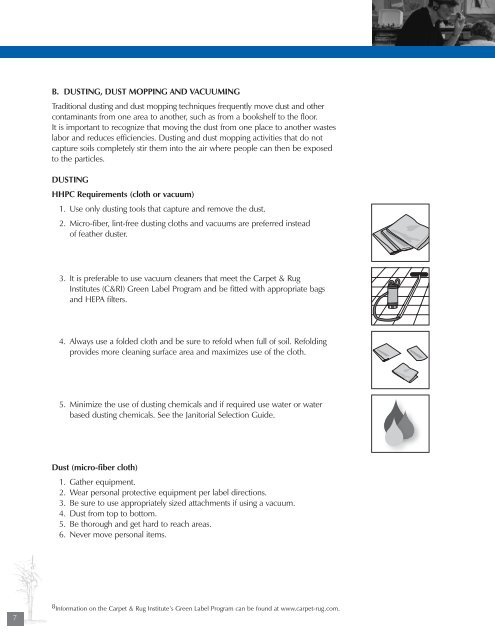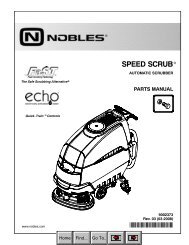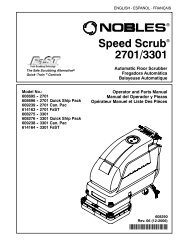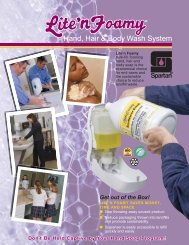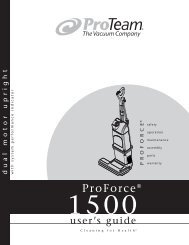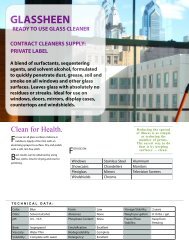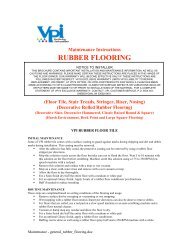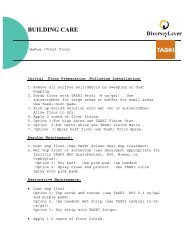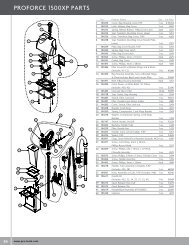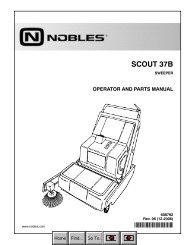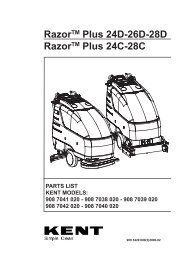B. DUSTING, DUST MOPPING AND VACUUMING Traditional ...
B. DUSTING, DUST MOPPING AND VACUUMING Traditional ...
B. DUSTING, DUST MOPPING AND VACUUMING Traditional ...
You also want an ePaper? Increase the reach of your titles
YUMPU automatically turns print PDFs into web optimized ePapers that Google loves.
7<br />
B. <strong><strong>DUST</strong>ING</strong>, <strong>DUST</strong> <strong>MOPPING</strong> <strong>AND</strong> <strong>VACUUMING</strong><br />
<strong>Traditional</strong> dusting and dust mopping techniques frequently move dust and other<br />
contaminants from one area to another, such as from a bookshelf to the floor.<br />
It is important to recognize that moving the dust from one place to another wastes<br />
labor and reduces efficiencies. Dusting and dust mopping activities that do not<br />
capture soils completely stir them into the air where people can then be exposed<br />
to the particles.<br />
<strong><strong>DUST</strong>ING</strong><br />
HHPC Requirements (cloth or vacuum)<br />
1. Use only dusting tools that capture and remove the dust.<br />
2. Micro-fiber, lint-free dusting cloths and vacuums are preferred instead<br />
of feather duster.<br />
3. It is preferable to use vacuum cleaners that meet the Carpet & Rug<br />
Institutes (C&RI) Green Label Program and be fitted with appropriate bags<br />
and HEPA filters.<br />
4. Always use a folded cloth and be sure to refold when full of soil. Refolding<br />
provides more cleaning surface area and maximizes use of the cloth.<br />
5. Minimize the use of dusting chemicals and if required use water or water<br />
based dusting chemicals. See the Janitorial Selection Guide.<br />
Dust (micro-fiber cloth)<br />
1. Gather equipment.<br />
2. Wear personal protective equipment per label directions.<br />
3. Be sure to use appropriately sized attachments if using a vacuum.<br />
4. Dust from top to bottom.<br />
5. Be thorough and get hard to reach areas.<br />
6. Never move personal items.<br />
8 Information on the Carpet & Rug Institute’s Green Label Program can be found at www.carpet-rug.com.
Healthy High Performance Cleaning Program<br />
<strong>DUST</strong> <strong>MOPPING</strong> <strong>AND</strong> <strong>VACUUMING</strong><br />
HHPC Requirements<br />
1. A micro-fiber flat mop is preferred over a dry or chemically treated cotton mop.<br />
2. If using a micro-fiber mop, choose the widest mop possible taking into<br />
consideration the area, obstructions, unevenness of the floor, etc.<br />
3. If using a vacuum, be sure to use a wide area hard floor attachment to<br />
maximize soil removal and to minimize labor.<br />
4. C&RI’s Green Label Program and HEPA filters are preferred for vacuums.<br />
Dust Mopping (mop or vacuum)<br />
1. Assemble equipment and supplies.<br />
2. Put on appropriate personal protective equipment, as stated on the product<br />
label and MSDS.<br />
3. Using a putty knife, carefully remove any gum or other debris stuck to the floor.<br />
4. Start from a far corner and work toward the door.<br />
5. When using a micro-fiber flat mop, use a continuous motion, without lifting<br />
the mop from the floor.<br />
6. Typically begin next to the wall. When turning, pivot so that the leading edge<br />
remains the same. Overlap the previously mopped path by 2 to 4 inches to<br />
ensure complete coverage.<br />
7. When completely finished, pick up the collected debris using a counter brush<br />
and dust pan or vacuum.<br />
8. When the micro-fiber no longer attracts soil, it will need to be laundered.<br />
Vacuum bags should be checked periodically and changed out when they<br />
become half-full.<br />
8


